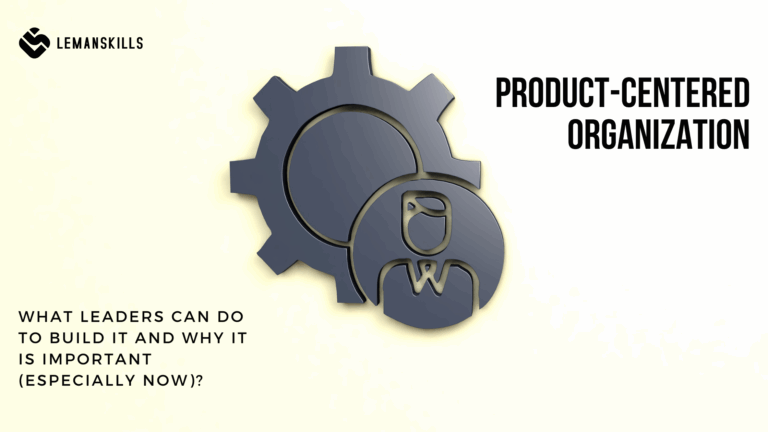As leaders, time is one of our most valuable resources, yet it’s one we often misuse without even realizing it. Reflecting on my own leadership journey, I’ve identified three significant ways I’ve wasted time (at least, so far). These lessons and the things I’ve started to do differently as a positive consequence of them have not only shaped how I lead today but have also helped me become a more effective and focused person. My goal by sharing these lessons is to help you avoid some of the same pitfalls and grow as a leader. Regardless of where you are on your leadership path.
Lesson 1: Waiting for Perfection
One of the earliest and most persistent mistakes I made as a leader was waiting for perfection before making decisions or moving forward. Whether it was launching a new product, rolling out a process change, or even sending an email to the team or organization, I would delay action until I felt everything was flawless. My belief was that perfection equaled success.
However, especially in tech world, where innovation moves at lightning speed, waiting for perfection often means missing opportunities or waisted time. I remember one situation vividly when my team had developed a very promising growth program for the leadership team. Instead of releasing an MVP and iterate based on peoples’ feedback, I insisted on refining every detail before launch. By the time we released it, some of the needs where already covered and part of the program was pointless.
Solution? My turning point came when I embraced the concept of “progress over perfection.” I began to prioritize speed and adaptability over getting everything right the first time. One of the tools that helped me was implementing agile tools within my team. By breaking projects into smaller, iterative cycles, we were able to deliver value faster and make improvements based on real-world feedback.
I also adopted a mindset shift: I stopped seeing imperfection as failure and started viewing it as an opportunity to learn and grow. Now, I encourage people I work with to release early and often, knowing that we can course-correct along the way. This approach has not only saved us time but has also fostered a culture of innovation and showing people that adaptability is the most important thing when we want to achieve a lasting success.
Lesson 2: Looking for an Ideal Candidate
Another way I wasted time as a leader was obsessing over finding the “perfect” candidate for open roles on my team. I would spend months searching for someone who checked every box on the job description: SME skills & knowledge, cultural fit, growth potential. It was only to realize that this person rarely exists.
I recall one hiring process where I was looking for a senior facilitator to lead a critical growth project. I turned down several qualified candidates because they didn’t meet my impossibly high standards. In the meantime, the project has begun, I needed to deliver most of the things on my own. I was exhausted, my other tasks were put on hold since it was impossible for me to do everything. I finally made a hire, and it became clear that many of the “must-have” qualities I’d been fixated on weren’t as critical as I thought.
Solution? I learned to focus on potential rather than perfection when hiring. Instead of searching for someone who ticks every box, I now look for candidates who demonstrate a growth mindset, strong problem-solving skills, and the ability to adapt to the changing needs of the business.
To make this shift, I changed a little the hiring process to include scenarios and problem-solving exercises that reflect real challenges that we face. This gives me better insight as a leader into how candidates think and approach problems rather than just their resume qualifications.
Additionally, I started investing more in onboarding and training. By providing new hires with the tools and support they need to succeed, we’ve been able to develop talent internally instead of waiting for the “perfect” external hire. This not only saves time but also builds loyalty and engagement within the team.
Lesson 3: Focusing on the Wrong Things
As leaders, it’s easy to get caught up in tasks that feel urgent but don’t actually move the needle. For me, this often-looked like micromanaging or spending too much time on operational details rather than strategic priorities.
I remember a period when my calendar was packed with meetings about minor issues: approving small budget requests, troubleshooting technical things on the e-learning platform, or reviewing every slide of the training deck. While these tasks felt important in the moment, they distracted me from higher-level responsibilities that nobody can do, but me.
The result? Burnout for me and frustration for my team, who felt stifled by my constant involvement in their work.
Solution? The first step to breaking this cycle was learning how to delegate effectively. Even if I teach others how to delegate, I sometimes struggle with giving things away since I know exactly how to do them on my own. I realized that by holding onto tasks that others could handle, I was not only wasting my own time but also robbing my team of opportunities to grow and take ownership.
I started by identifying tasks that didn’t require my direct involvement and assigning them to team members who were capable (or could become capable with some guidance). To ensure success, I provided clear expectations and allowed space for mistakes. The real space, not only on the paper. If team doesn’t make mistakes that means that they never try doing something new or different. And I don’t want that kind of stagnation and fear in my team.
I also adopted a strong system for prioritization. Always using the check point on how this task makes an impact on our goals, we all know how to choose when the task list is endless. This helped me stay aligned with long-term goals while empowering my team to handle day-to-day operations.
Finally, I carved out dedicated time for strategic thinking and reflection. By blocking off time on my calendar each week for big-picture planning, I was able to shift my focus from reactive mode to proactive leadership.
Key Takeaways for Every Tech Leader
If there’s one thing I’ve learned from these experiences, it’s that leadership is as much about mindset as it is about skills or strategies. Here are three actionable takeaways you can apply today:
- Embrace imperfection: don’t let the pursuit of perfection hold you back from taking action. Start small, iterate quickly, and learn as you go.
- Hire for potential: instead of searching endlessly for the “perfect” candidate, look for individuals who have the ability and willingness to grow into the role & are eager to learn.
- Prioritize to not waste: focus your energy on what truly matters—strategic priorities, team development, and long-term goals, and delegate or eliminate the rest. Be a strong leader.
Leadership is a journey of continuous learning and growth. By recognizing how we waste time and taking steps to address it, we can free ourselves up to focus on what really matters: empowering our teams, driving innovation, and creating lasting impact in our organizations.
What about you? What lessons have you learned lately as a leader? Let’s continue the conversation: because we’re all better when we learn from each other’s experiences than we are lonely with our struggles.




